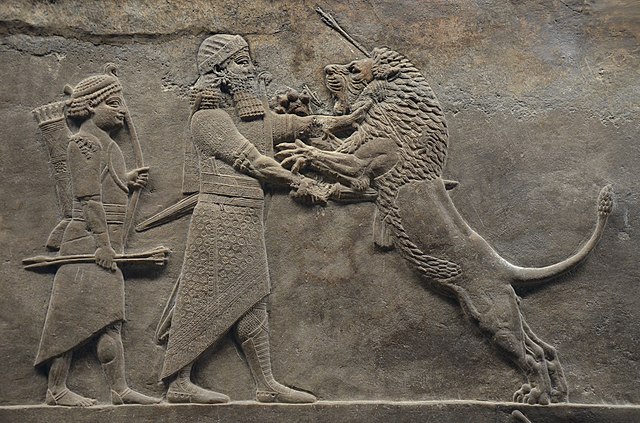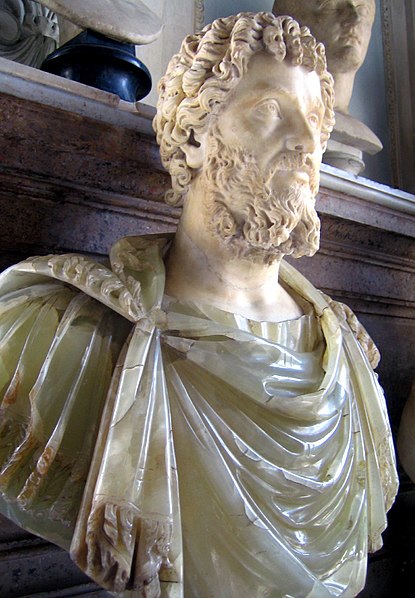Assyrian sculpture is the sculpture of the ancient Assyrian states, especially the Neo-Assyrian Empire of 911 to 612 BC, which was centered around the city of Assur in Mesopotamia which at its height, ruled over all of Mesopotamia, the Levant and Egypt, as well as portions of Anatolia, Arabia and modern-day Iran and Armenia. It forms a phase of the art of Mesopotamia, differing in particular because of its much greater use of stone and gypsum alabaster for large sculpture.
Assyrian sculpture
"Winged genie", Nimrud c. 870 BC, with inscription running across his midriff.
Part of the Lion Hunt of Ashurbanipal, c. 645–635 BC
Detail of genie figure, the palace of Ashurnasirpal II
Alabaster is a mineral and a soft rock used for carvings and as a source of plaster powder. Archaeologists, geologists, and the stone industry have different definitions and usages for the word alabaster. In archaeology, the term alabaster is a category of objects and artefacts made from the varieties of two different minerals: (i) the fine-grained, massive type of gypsum, and (ii) the fine-grained, banded type of calcite.
Calcite alabaster: The tomb of Tutankhamun (d. 1323 BC) contained a practical objet d’art, a cosmetics jar made of Egyptian alabaster, which features a lid surmounted by a lioness (goddess Bast).
Alabaster artefact: A composite bust of the Emperor Septimius Severus; the head is marble and the bust is alabaster.
Alabaster windows in the Church of Santa Maria la Mayor of Morella, Spain (built 13th-16th centuries)
Alabaster workshop in Volterra, Italy








